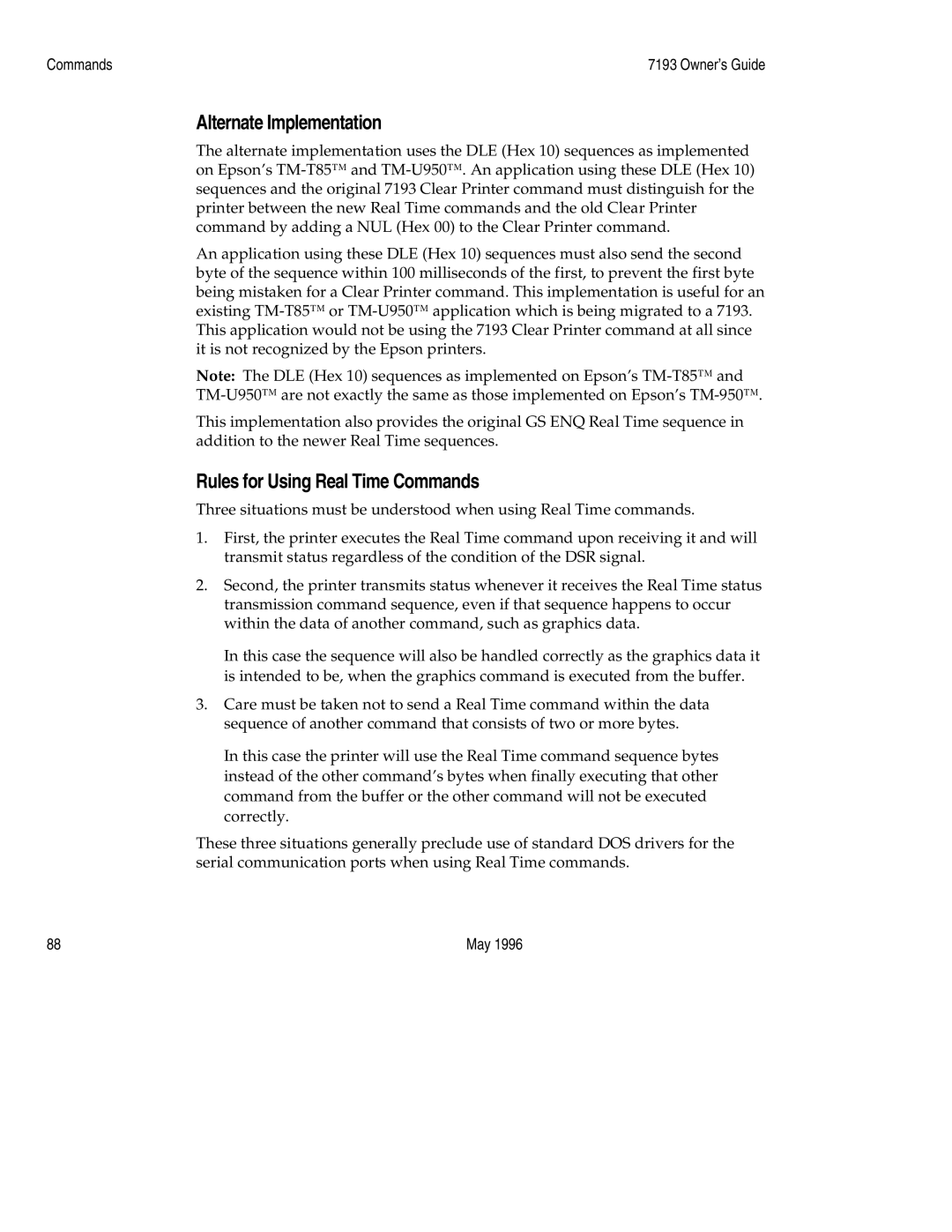Commands | 7193 Owner’s Guide |
Alternate Implementation
The alternate implementation uses the DLE (Hex 10) sequences as implemented on Epson’s
An application using these DLE (Hex 10) sequences must also send the second byte of the sequence within 100 milliseconds of the first, to prevent the first byte being mistaken for a Clear Printer command. This implementation is useful for an existing
Note: The DLE (Hex 10) sequences as implemented on Epson’s
This implementation also provides the original GS ENQ Real Time sequence in addition to the newer Real Time sequences.
Rules for Using Real Time Commands
Three situations must be understood when using Real Time commands.
1.First, the printer executes the Real Time command upon receiving it and will transmit status regardless of the condition of the DSR signal.
2.Second, the printer transmits status whenever it receives the Real Time status transmission command sequence, even if that sequence happens to occur within the data of another command, such as graphics data.
In this case the sequence will also be handled correctly as the graphics data it is intended to be, when the graphics command is executed from the buffer.
3.Care must be taken not to send a Real Time command within the data sequence of another command that consists of two or more bytes.
In this case the printer will use the Real Time command sequence bytes instead of the other command’s bytes when finally executing that other command from the buffer or the other command will not be executed correctly.
These three situations generally preclude use of standard DOS drivers for the serial communication ports when using Real Time commands.
88 | May 1996 |
